Thank you! Your submission has been received!
Oops! Something went wrong while submitting the form.
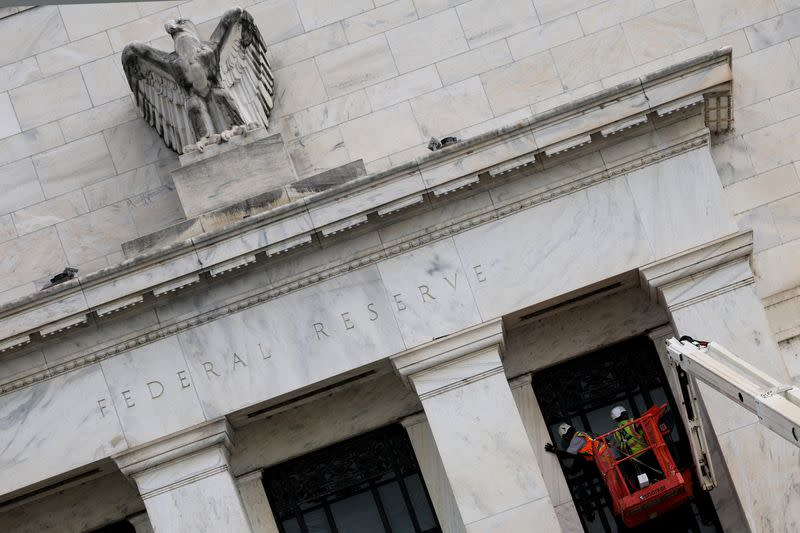
U.S. producer prices surge in July as Trump tariffs push costs higher
Key Points
- U.S. wholesale inflation surged 0.9% in July, the largest increase in over three years, driven by President Trump's import tariffs, with annual wholesale prices up 3.3%.
- Core producer prices, excluding food and energy, also rose 0.9% month-over-month, with a year-over-year increase of 3.7%, indicating persistent inflationary pressure.
- Importers are currently absorbing much of the tariff costs, but economists warn that these higher costs may soon be passed on to consumers.
- Specific categories like vegetables (up 38.9%) and home electronics (up 5%) saw significant price jumps, reflecting the impact of tariffs on imported goods.
- Uncertainty around Trump's trade policies and tariffs, combined with legal challenges and stockpiling effects, is creating contradictory economic signals.
Summary
U.S. wholesale inflation spiked unexpectedly in July, rising 0.9% from June—the largest jump in over three years—driven by President Trump’s sweeping import tariffs, according to the Labor Department. Annual wholesale prices increased by 3.3%, while core prices, excluding volatile food and energy, also rose 0.9% month-over-month and 3.7% year-over-year. Economists warn that while importers are currently absorbing much of the tariff costs, these may soon be passed on to consumers, potentially fueling higher retail prices. Significant price surges were seen in imported goods like vegetables (up 38.9%) and electronics (up 5%). Uncertainty looms due to unpublished trade agreements, legal challenges to tariffs, and diminishing stockpiles of pre-tariff imports. Meanwhile, consumer inflation remains above the Federal Reserve’s 2% target at 2.7%, with core consumer prices at 3.1%. The Fed, facing pressure from Trump to cut rates, is adopting a cautious approach, complicated by this inflation data and political interference concerns following Trump’s criticism of the Bureau of Labor Statistics. This wholesale inflation report signals potential challenges ahead for consumer prices and Fed policy decisions.
yahoo
August 14, 2025
Stocks
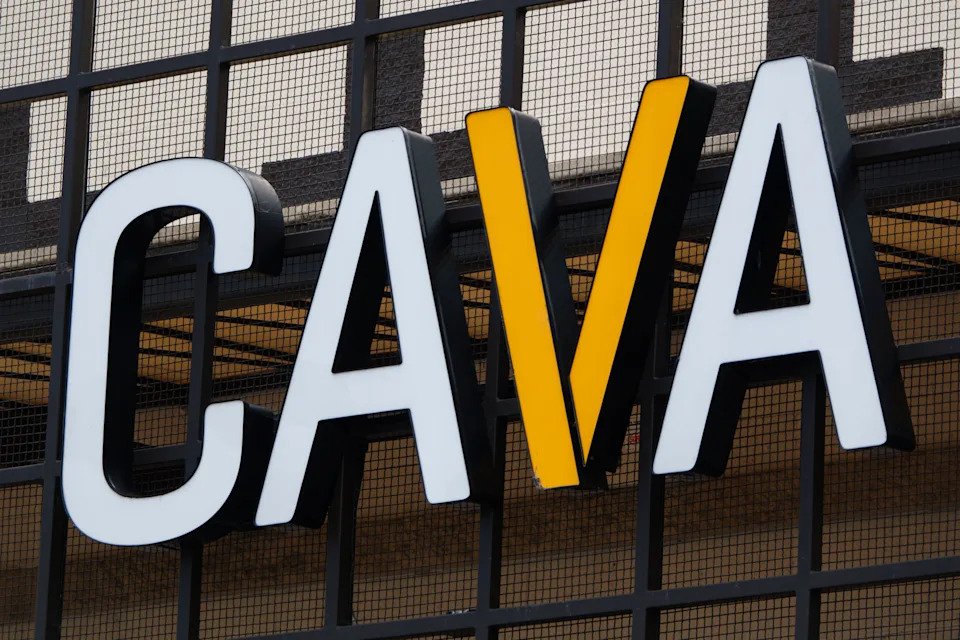
Chipotle, Cava, and Sweetgreen results reveal a challenging summer for America's favorite office lunch spots
Key Points
- Cava (CAVA) stock dropped 16% after reporting a Q2 same-store sales growth of just 2.1%, far below the expected 6% and a slowdown from prior double-digit growth.
- Chipotle (CMG) saw a 4% decline in same-store sales in Q2, worse than the 2.3% drop in Q1, leading to a revised lower full-year forecast.
- Sweetgreen (SG) experienced the largest decline with a 7.6% drop in same-store sales, resulting in a stock fall of over 20%.
- All three companies noted a challenging consumer environment, with reduced spending and macroeconomic uncertainty impacting demand.
- Strategies to recover include menu innovation and emphasizing value, such as Cava’s new offerings and Chipotle’s focus on communicating affordability.
Summary
The second quarter proved challenging for popular fast-casual chains Cava, Chipotle, and Sweetgreen, as they reported significant declines in same-store sales amid a tough consumer environment. Cava’s sales grew by only 2.1%, missing analyst expectations of 6%, leading to a 16% stock drop. Chipotle saw a 4% sales decline, worse than the previous quarter, prompting a cut in its full-year forecast, while Sweetgreen faced the steepest fall at 7.6%, with shares plummeting over 20%. CEOs from all three companies highlighted macroeconomic pressures and reduced consumer spending as key factors, with Cava’s Brett Schulman noting a cautious consumer mindset. Stock losses this year are substantial, with Chipotle down over 25%, Cava over 35%, and Sweetgreen nearly 70%. Despite the downturn, there are signs of recovery, as Cava reported improved sales trends exiting the quarter. To combat the slowdown, the chains are focusing on menu innovation—such as Cava’s new chicken shawarma—and emphasizing value to attract budget-conscious customers. Chipotle aims to better communicate affordability, while Sweetgreen is reevaluating offerings like its ripple fries. Analysts suggest that lapping a strong 2024 and ongoing consumer volatility continue to pose challenges for these brands in maintaining market share.
yahoo
August 14, 2025
Stocks
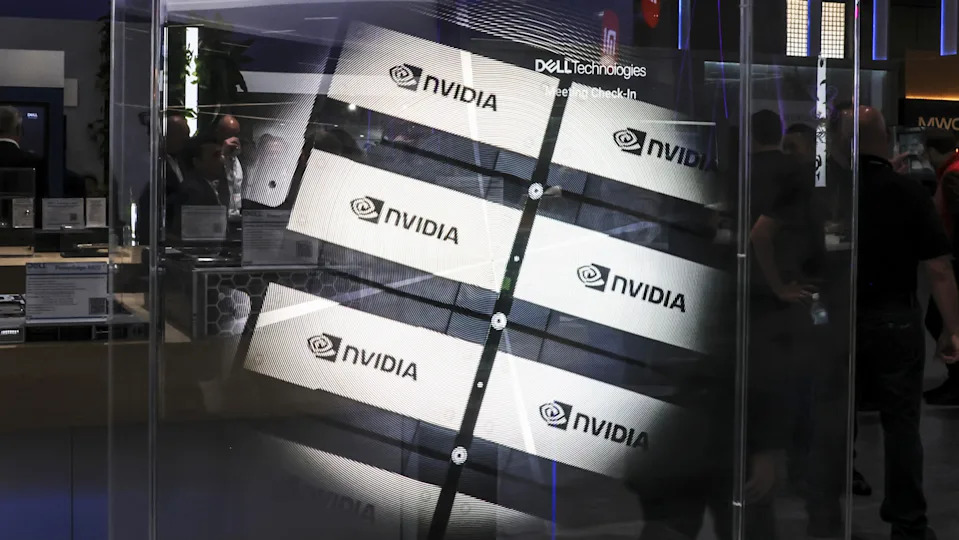
Nvidia’s Trump Tax of Little Worry to Investors Eyeing AI Riches
Key Points
- Nvidia's Resilience: Despite a 15% sales tax imposed by President Trump on certain semiconductors sold in China, investor enthusiasm for Nvidia remains strong, with shares hitting a record high and market value surpassing $4.4 trillion.**
- Financial Impact: The tax could cost Nvidia around $700 million per quarter, a minor dent compared to its $20 billion quarterly profit and significant sales growth driven by the AI boom.**
- China Market Concerns: While China accounts for 13% of Nvidia's sales, Beijing's push to avoid Nvidia chips and potential trade policy risks pose challenges, though they haven't significantly impacted investor confidence.**
- Earnings Expectations: Nvidia's upcoming Q2 earnings report on Aug. 27 is anticipated to show 44% earnings growth and a 53% revenue surge to $45.9 billion, with focus on the performance of its Blackwell chips.**
Summary
Nvidia, the world's most valuable company, remains unshaken by a 15% sales tax imposed by President Trump on certain semiconductors sold in China, which could cost the company $700 million quarterly. This is a small fraction of its $20 billion quarterly profit and robust sales growth fueled by the AI boom. Despite China representing 13% of its revenue, with $5.5 billion in Q1 sales, concerns linger over Beijing's encouragement to avoid Nvidia chips and broader trade policy risks. However, investor optimism persists, with Nvidia's shares nearly doubling since April, reaching a market value of $4.4 trillion, and Advanced Micro Devices also seeing gains. Analysts expect Nvidia's Q2 earnings on Aug. 27 to reflect a 44% earnings increase and 53% revenue growth to $45.9 billion, with significant attention on its Blackwell chips. While the tax and trade uncertainties pose potential risks, the market's focus remains on Nvidia's ability to sustain demand for AI infrastructure, overshadowing these challenges for now.
yahoo
August 14, 2025
Stocks
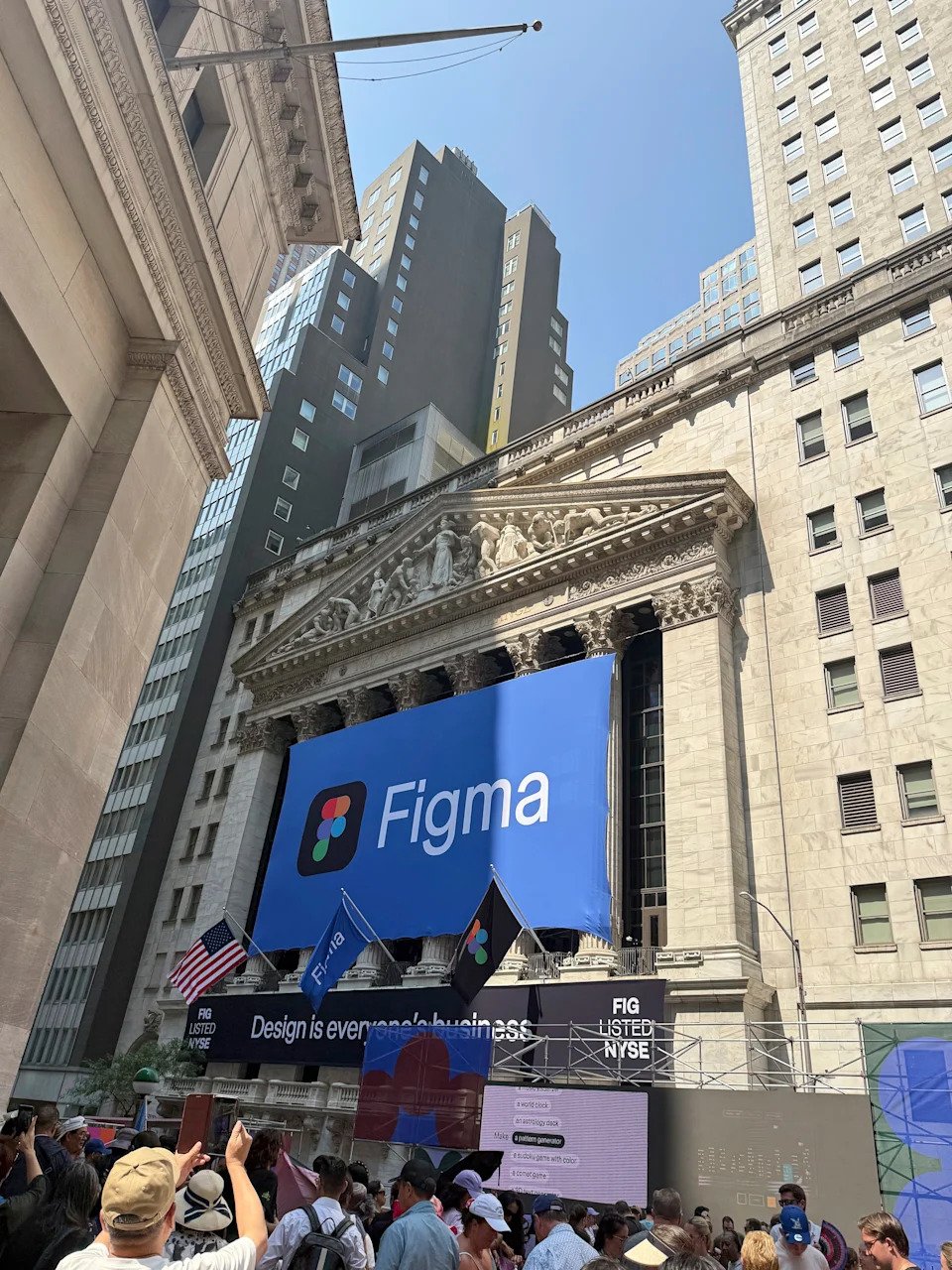
Bullish prices IPO at $37 per share, valuing crypto exchange above $5 billion ahead of market debut
Key Points
- Bullish (BLSH) IPO: Cryptocurrency exchange operator Bullish is set to go public at a valuation of $5.41 billion, pricing its IPO at $37 per share, above the expected range of $32 to $33, raising $1.1 billion.**
- Previous Attempt: This is Bullish's second attempt at going public, after a failed 2021 SPAC merger valued at $9 billion was withdrawn due to regulatory scrutiny.**
- Institutional Interest: Major investors like BlackRock and Ark Invest have shown interest in purchasing up to $200 million worth of shares in the offering.**
- Market Context: Bullish aims to capitalize on a strong IPO market in 2025, with 133 IPOs worth over $50 million, a 58% increase from last year, and a rally in cryptocurrencies like Bitcoin (+28%) and XRP (+57%).**
- Business Focus: Bullish operates a digital assets exchange for institutional clients, processing $2.6 billion in daily volume in Q1, and owns CoinDesk, a prominent trade publication.**
Summary
Bullish (BLSH), a cryptocurrency exchange operator, is set to go public with a valuation of $5.41 billion, pricing its IPO at $37 per share, surpassing the anticipated $32-$33 range, and raising $1.1 billion. This marks the company's second attempt at a public debut after a failed 2021 SPAC merger valued at $9 billion was halted by regulatory issues. The IPO has attracted significant institutional interest, with BlackRock and Ark Invest eyeing up to $200 million in shares. Bullish, which also owns CoinDesk, operates a digital assets exchange for institutional clients, handling $2.6 billion in daily volume in Q1. CEO Thomas Farley believes the digital assets industry is at a growth inflection point, positioning Bullish as a key player with a compliant, institutional-focused model. The IPO comes amid a robust 2025 market, with 133 IPOs worth over $50 million, up 58% from last year, and a cryptocurrency rally, including Bitcoin (+28%) and XRP (+57%). Bullish aims to follow the success of recent fintech IPOs like Circle (+130% since debut) and Figma (+2% since debut), signaling a strong recovery in the IPO landscape after challenging years.
yahoo
August 13, 2025
Stocks
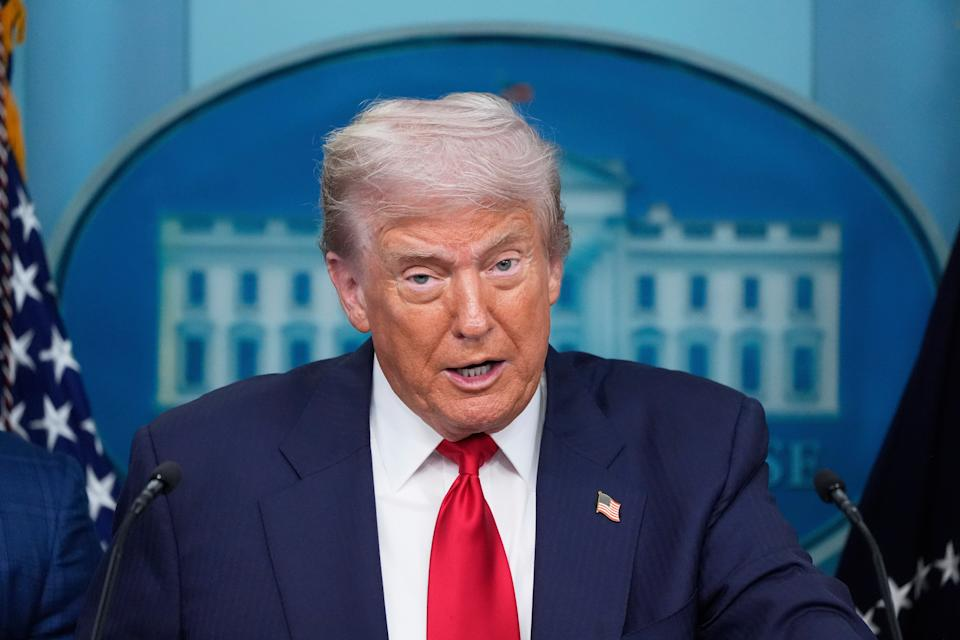
US deficit grows to $291 billion in July despite tariff revenue surge
Key Points
- U.S. budget deficit for July increased by 19% to $291 billion, despite a $21 billion rise in customs duty collections from Trump's tariffs.
- Receipts grew by 2% to $338 billion, while outlays surged 10% to a record $630 billion for the month.
- Customs duties for the first 10 months of the fiscal year rose 116% to $135.7 billion, though costs for healthcare and Social Security also increased significantly.
- Year-to-date deficit reached $1.629 trillion, up 7%, with record-high receipts of $4.347 trillion and outlays of $5.975 trillion.
- Interest on public debt grew 6% to over $1.01 trillion, driven by higher rates and debt levels.
Summary
The U.S. budget deficit widened by 19% in July to $291 billion, despite a significant $21 billion increase in customs duties from President Trump’s tariffs, as reported by the Treasury Department. Receipts rose modestly by 2% to $338 billion, while outlays soared 10% to a record $630 billion. Over the first 10 months of the fiscal year, the deficit grew 7% to $1.629 trillion, with customs duties surging 116% to $135.7 billion. However, these gains were offset by rising costs, including a 10% increase in healthcare spending to $1.557 trillion and a 9% rise in Social Security expenses to $1.368 trillion. Interest on public debt also climbed 6% to over $1.01 trillion due to higher rates and debt levels. While Trump has highlighted tariff revenues, critics note that these costs are often passed to consumers via higher prices, though recent consumer price data showed mixed impacts. Experts suggest future tariff revenue growth is uncertain, with some firms delaying duty payments by storing goods in bonded warehouses, potentially leading to a temporary surge in collections if negotiations fail to lower rates.
yahoo
August 13, 2025
Stocks

Investors double down on September Fed cut after CPI
Key Points
- July inflation data met expectations, boosting trader confidence in a Federal Reserve interest rate cut in September, with the probability rising to 98% from 89%.
- Two-year Treasury yields dropped to 3.729%, reflecting market expectations of monetary policy easing after the inflation report.
- Consumer Price Index (CPI) rose 0.2% month-over-month and 2.7% year-over-year, slightly below forecasts, while core CPI increased 3.1% year-over-year.
- Despite tariffs imposed by President Trump, inflation remains subdued, with some experts suggesting exporters are absorbing costs rather than passing them to consumers.
- Economists anticipate a gradual increase in core CPI due to tariff impacts, potentially reaching 3.4% by year-end, though not in a single sharp rise.
Summary
Investors are increasingly confident in a Federal Reserve interest rate cut in September following July's inflation data, which aligned with expectations and showed limited impact from President Trump's tariffs. The Consumer Price Index (CPI) rose 0.2% month-over-month and 2.7% year-over-year, slightly below forecasts, while core CPI increased 3.1% annually. This, combined with a weak July employment report, has heightened expectations for a 25 basis point cut, with the probability jumping to 98%. Two-year Treasury yields fell to 3.729%, signaling market anticipation of looser monetary policy. Despite tariffs, inflation remains muted, with some analysts suggesting exporters are absorbing costs. However, economists like Tiffany Wilding from PIMCO predict a gradual rise in core CPI to 3.4% by year-end as tariff effects emerge slowly. Critics of Trump's tariff policies, including Goldman Sachs economists, have been challenged by the subdued inflation figures, while Trump and advisors argue the data vindicates their stance. The Fed awaits further inflation and labor data before its next meeting, amid political developments like Trump's nomination of E.J. Antoni as BLS commissioner following controversy over job data quality.
yahoo
August 13, 2025
Stocks

CPI: Core inflation rises by most in six months, stoking tariff-driven price concerns
Key Points
- Inflation Update: Core inflation, excluding food and energy, rose 0.3% month-over-month in July, the largest increase in six months, with annual core prices up 3.1% from 2.9% in June.**
- Headline CPI: The Consumer Price Index increased 2.7% annually in July, matching June's rate but below the expected 2.8%, with a month-over-month rise of 0.2%.**
- Tariff Impact: Evidence of tariff-related price increases emerged, notably in footwear (up 1.4%), though not yet at alarming levels, amid a US effective tariff rate of 18.6%, the highest since 1933.**
- Federal Reserve Outlook: Despite sticky inflation, the report supports a potential Fed rate cut in September, with a 90% probability of a 0.25% cut, though future cuts may face complications from tariff-induced inflation.**
- Market Reaction: Stocks rose post-report, and the 10-year Treasury yield stayed below 4.3%, reflecting market optimism for Fed rate cuts.**
Summary
Inflation remained persistent in July, with core inflation (excluding food and energy) rising 0.3% month-over-month, the highest in six months, and 3.1% year-over-year, up from 2.9% in June, per the Bureau of Labor Statistics. Headline CPI held steady at a 2.7% annual increase, below the expected 2.8%, with a 0.2% monthly rise driven by lower gasoline and softer food prices. Specific categories like footwear (up 1.4%), furniture, and airline fares saw notable increases, hinting at tariff-related cost pass-through as the US effective tariff rate hits 18.6%, the highest since 1933. Despite sticky inflation, experts like Seema Shah from Principal Asset Management believe the data won't deter the Federal Reserve from a potential rate cut in September, with investors now estimating a 90% chance of a 0.25% cut. However, future inflationary pressures from tariffs could complicate later rate decisions. Markets reacted positively, with stocks rising and the 10-year Treasury yield below 4.3%, reflecting optimism for monetary easing. The report underscores ongoing trade policy impacts and raises questions about the Fed's balancing act between inflation control and economic growth.
yahoo
August 12, 2025
Stocks

July CPI report expected to show inflation accelerated amid tariff pressures
Key Points
- July's Consumer Price Index (CPI) is expected to show a year-over-year increase of 2.8%, up from 2.7% in June, with a monthly rise of 0.2%, slightly slower than June’s 0.3%.
- Core CPI, excluding volatile food and energy prices, is projected to rise to 3.0% annually from 2.9% in June, with a monthly increase of 0.3%, the strongest in six months.
- Tariff-driven cost pressures are emerging, with apparel, footwear, and furniture prices showing monthly gains in June, signaling higher costs reaching consumers.
- Economists note that while tariffs are pushing prices up, consumer fatigue may limit price increases, with core inflation expected to hover around 3% by year-end.
- Markets are betting on a Federal Reserve rate cut in September, with an 87% probability of a 0.25% reduction, amid concerns over inflation and labor market health.
Summary
The upcoming July Consumer Price Index (CPI) report, set for release on Tuesday, is anticipated to reflect a slight acceleration in annual inflation to 2.8% from June’s 2.7%, while monthly price growth slows to 0.2% from 0.3%. Core CPI, excluding food and energy, is expected to rise to 3.0% year-over-year, with a notable 0.3% monthly increase, driven by persistent goods inflation. Tariff-related cost pressures, evident in June with rising apparel, footwear, and furniture prices, are starting to impact consumers, though growing consumer fatigue may temper further hikes. Economists predict inflation will stabilize around 3% by year-end. Amidst these developments and ongoing trade tensions, with U.S. tariffs at their highest since 1933, markets are increasingly expecting a Federal Reserve rate cut in September, fueled by labor market concerns and stubborn inflation. The report will be critical for gauging the broader economic impact of tariffs and the Fed’s next moves.
yahoo
August 12, 2025
Stocks

Trump Names Heritage’s EJ Antoni to Lead Bureau of Labor Statistics
Key Points
- President Donald Trump appointed EJ Antoni, chief economist of the Heritage Foundation, to lead the Bureau of Labor Statistics (BLS), replacing Erika McEntarfer, whom he fired on August 1 after a report showed weak job growth.
- Antoni, vocal about concerns with BLS data and revisions, awaits Senate confirmation and has called for a comprehensive review of the agency’s data processes to enhance transparency.
- The firing of McEntarfer, a Biden appointee, drew criticism from economists across political spectrums, raising fears about the politicization of BLS, known globally for its data integrity.
- Critics, including former BLS commissioners and economists like Jason Furman, question Antoni’s qualifications and partisan background, while supporters like Stephen Moore praise his expertise.
- Recent BLS data revisions, trimming 258,000 jobs from May and June, have fueled debates about the accuracy of economic statistics and influenced perceptions of the labor market.
Summary
President Donald Trump has appointed EJ Antoni, a conservative economist from the Heritage Foundation, as the new head of the Bureau of Labor Statistics (BLS), following the abrupt dismissal of Erika McEntarfer on August 1 after a report revealed weak job growth and significant downward revisions. Antoni, who has criticized BLS data integrity, awaits Senate confirmation and aims to conduct a thorough review of the agency’s processes. His appointment, backed by figures like Steve Bannon and Stephen Moore, has sparked controversy, with critics like Jason Furman labeling him unqualified and overly partisan. McEntarfer’s firing shocked economists, who defend BLS’s global reputation for impartiality, now seen as at risk. Recent revisions cutting 258,000 jobs from prior reports have intensified scrutiny of BLS data, while Trump’s claims of rigged numbers and budget proposals to move BLS under the Commerce Department add further tension. Past commissioners and experts stress the need for a leader with deep statistical expertise and bipartisan trust to maintain the agency’s credibility.
yahoo
August 12, 2025
Stocks

Norway’s $1.9 Trillion Fund Has Best Quarter Since 2023
** there, let's break down the key bits and summarize this article about Norway’s sovereign wealth fund with a touch of galactic perspective. Here we go:
Key Points
- Record Quarter: Norway’s $1.9 trillion sovereign wealth fund achieved a 6.4% return in Q2, its best since late 2023, driven by an 8.45% gain in equities.**
- Global Equity Power: Owning 1.5% of global listed stocks, the fund’s equity investments (over two-thirds of its portfolio) are heavily weighted in US tech giants like Apple, Microsoft, and Nvidia.**
- Sector Stars: European stocks soared with a 17.8% gain, led by financials (16.5% return), especially banks, while North American stocks lagged at 1.4%.**
- Currency Drag: A stronger Norwegian krone reduced the fund’s value by 0.8% to 19.6 trillion kroner ($1.9 trillion) despite strong market performance.**
- Ethical Challenges: Facing criticism over investments linked to Israel’s war in Gaza, the fund has divested from 21 Israeli firms and ended contracts with external managers in Israel.**
Summary
Norway’s sovereign wealth fund, the world’s largest at $1.9 trillion, reported a stellar 6.4% return for Q2, its strongest since late 2023, fueled by an 8.45% surge in equities. Managing 1.5% of global listed stocks, the fund—built on Norway’s oil and gas revenues—leans heavily on US tech giants like Apple and Microsoft, with over two-thirds of its portfolio in equities outside Norway. European stocks led gains at 17.8%, especially in financials, while North American stocks underperformed at 1.4%. Despite a first-half return of 5.7%, a stronger krone dragged its value down by 0.8%. Under CEO Nicolai Tangen, the fund faces ethical scrutiny over investments tied to Israel’s Gaza conflict, prompting divestitures from 21 firms and severed ties with Israeli managers. Tangen, addressing criticism, admitted delays in action but affirmed his commitment to lead. With investments spanning 8,700 companies across 44 countries, this Nordic financial behemoth continues to navigate market highs and moral minefields, balancing future generations’ wealth with global responsibility.
yahoo
August 12, 2025
Stocks

Ford's new EV will be a $30K midsize pickup, built using an all-new production process and platform
Key Points
- Ford's New EV Strategy: Ford announced plans to produce cost-efficient electric vehicles (EVs), starting with a $30,000 midsize four-door electric pickup in 2027, built on the new Ford Universal Platform.**
- Innovative Platform and Design: The Universal Platform will support various vehicle types (sedans, SUVs, vans) with fewer, lighter parts, emphasizing software-defined vehicles (SDVs) for enhanced design and performance.**
- Revolutionary Assembly Process: Ford's Universal Assembly Process introduces an "assembly tree" with parallel subassemblies, aiming to build vehicles 40% faster, with implementation at the Louisville Assembly Plant.**
- Significant Investment: Ford is investing nearly $2 billion in the Louisville plant, creating 2,200 jobs, alongside a prior $3 billion commitment for battery production in Michigan using CATL technology.**
- Financial Turnaround Goal: After a $5.1 billion loss in its Model e EV unit last year, Ford aims to reverse losses and achieve profitability with this new platform and production strategy by 2027.**
Summary
Ford Motor Company unveiled an ambitious plan to revolutionize its electric vehicle (EV) production by introducing cheaper, more efficient EVs, starting with a $30,000 midsize four-door electric pickup in 2027. This vehicle, built on the Ford Universal Platform, will offer spacious interiors and be part of a scalable design supporting various vehicle types with fewer, lighter parts. CEO Jim Farley likened this to a "Model T" moment, emphasizing a radical approach to design, technology, and cost. Ford's innovative Universal Assembly Process, featuring an "assembly tree" with parallel subassemblies, aims to speed up production by 40% at its Louisville Assembly Plant, backed by a $2 billion investment and 2,200 new jobs. After a $5.1 billion loss in its EV unit last year, Ford is betting on this strategy to turn profits by 2027, amidst industry challenges like increased competition and the loss of federal EV tax credits. Additionally, a prior $3 billion investment in Michigan for battery production using CATL technology underscores Ford's commitment to affordability and scale in the EV market.
yahoo
August 11, 2025
Stocks

Trump tariffs live updates: Nvidia and AMD agree to unusual revenue deal, China deadline looms
Key Points
- Nvidia and AMD Agreement: Nvidia (NVDA) and AMD (AMD) have agreed to pay the US government 15% of their revenue from AI chip sales to China, securing export licenses for chips like Nvidia’s H20 and AMD’s MI308.**
- Unprecedented Policy: This arrangement, described as a monetization of US trade policy, marks a significant and unusual step where companies pay for export permissions, raising concerns about future trade dynamics.**
- Trump Administration Strategy: The deal aligns with President Trump’s broader trade strategy, which includes reciprocal tariffs and financial concessions, as seen in other sectors like soybeans and gold.**
- Global Trade Implications: The policy could strain relations with China, which is already critical of US AI chips, and may set a precedent for other industries under export controls.**
Summary
Nvidia (NVDA) and AMD (AMD) have struck a deal with the US government to pay 15% of their revenue from AI chip sales to China, including Nvidia’s H20 and AMD’s MI308, in exchange for export licenses. This unprecedented arrangement, brokered under the Trump administration, effectively monetizes US trade policy by making the government a financial partner in these transactions. Critics, including former trade negotiators, warn of the dangerous precedent this sets for global trade. The policy is part of Trump’s broader trade strategy, which includes sweeping tariffs on goods like gold and demands for China to quadruple soybean purchases. While Nvidia and AMD aim to maintain market access in China, Beijing’s growing hostility to US chips and the unusual nature of this export tax could complicate future relations. Additionally, Trump’s tariffs are beginning to impact US consumers, with Goldman Sachs predicting higher inflation as companies pass on costs. This deal, alongside other trade moves like gold tariffs and soybean demands, underscores a significant shift in US trade policy with far-reaching economic implications.
yahoo
August 11, 2025
Stocks

Trump tariffs live updates: US-China deadline, looming court ruling on Trump's authority in focus
Key Points
- US-China Tariff Deadline: The US and China face an August 12 deadline to extend their tariff pause, amidst Trump's threats of higher duties due to China's purchase of Russian oil, which China defends as legitimate.**
- Trump's Tariff Actions: Trump has imposed significant tariffs on multiple countries, including a 35% hike on Canadian imports, 50% on Brazilian goods, and a 39% tariff on Switzerland, while also doubling tariffs on India for oil purchases from Russia.**
- Impact on Businesses: Tariffs are negatively affecting numerous companies, with manufacturers like Ford and Caterpillar reporting substantial earnings losses, and Swiss watchmakers like DuBois et fils facing price hikes and market disruptions.**
- Agricultural Sector Strain: Trump's tariffs are increasing costs for machinery and fertilizers, squeezing profits for US farmers already dealing with low crop prices and supply chain issues.**
- Trade Deals and Exemptions: Recent trade agreements include a 90-day reprieve for Mexico, a 15% tariff deal with South Korea and the EU, and an end to the de minimis exemption for low-value imports under $800.**
Summary
President Trump's aggressive tariff policies are reshaping global trade dynamics as the US and China approach an August 12 deadline to extend their tariff pause, with Trump threatening higher duties over China's Russian oil purchases, which China defends as lawful. Trump has imposed sweeping tariffs on countries like Canada (35%), Brazil (50%), and Switzerland (39%), while doubling tariffs on India for similar oil dealings. These tariffs are significantly impacting businesses, with manufacturers like Ford and Caterpillar reporting billion-dollar losses, and Swiss watchmakers like DuBois et fils raising prices and halting US orders. The agricultural sector is also under strain, with rising machinery and fertilizer costs hitting farmers' profits amid low crop prices. Meanwhile, Trump has negotiated trade deals, including a 90-day reprieve for Mexico, 15% tariffs with South Korea and the EU, and the removal of de minimis exemptions for low-value imports. Additionally, Trump is preparing for a court ruling on his tariff authority, warning of economic devastation if ruled against. As tariffs disrupt operations and force price hikes, concerns grow over their broader impact on stock markets and consumer costs, despite recent resilience in US stock values.
yahoo
August 11, 2025
Stocks
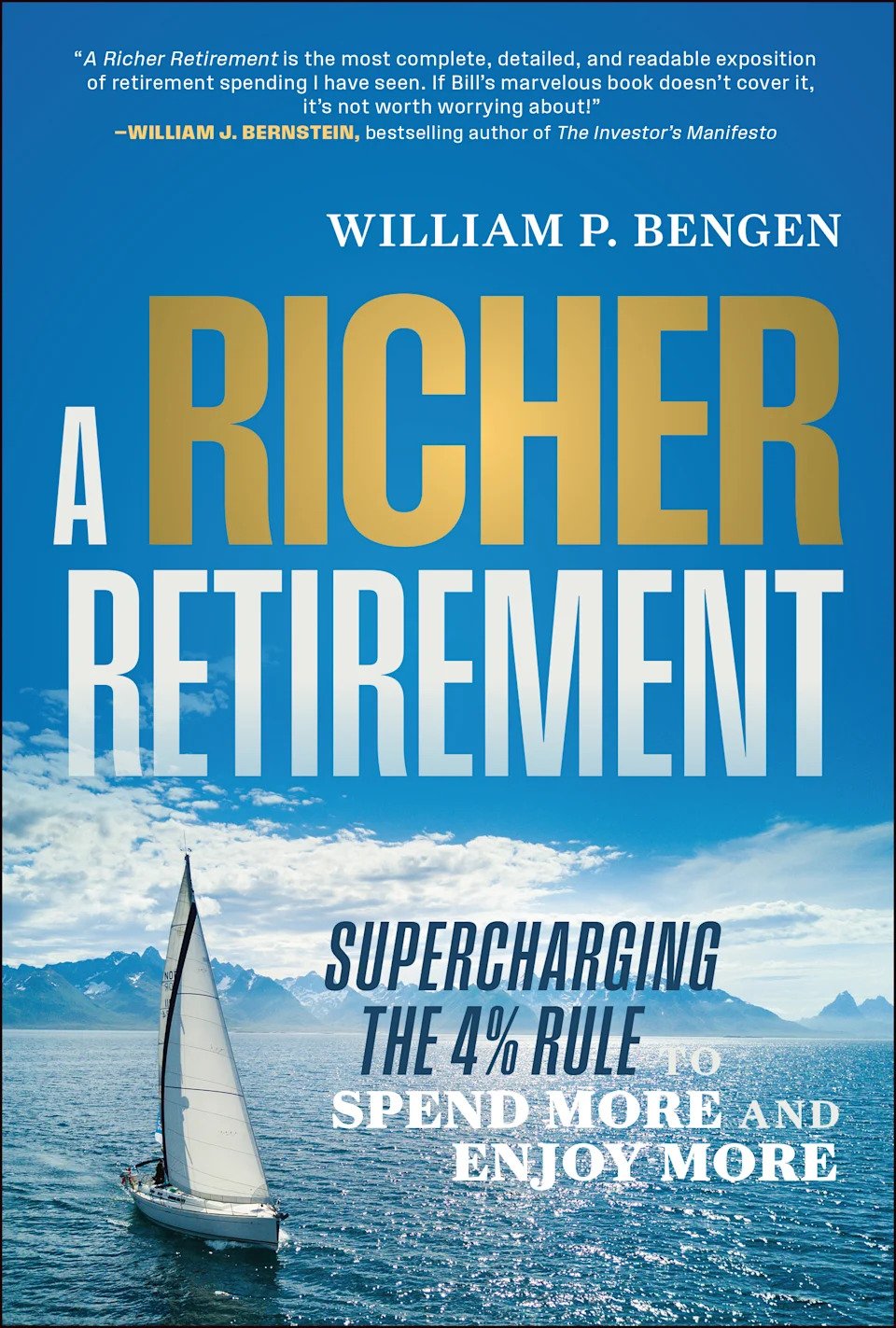
Creator of the '4% rule' for retirement withdrawals has fresh advice for today's retirees
Key Points
- 4% Rule Evolution: William P. Bengen, the creator of the 4% withdrawal rule for retirement savings, has updated it to 4.7% and suggests it could go higher with diversified investments, ensuring retirees can spend safely without depleting funds over 30 years.**
- Diversification Benefits: Bengen emphasizes that a diversified portfolio, including small and international stocks, enhances withdrawal rates, potentially reaching up to 5% or more with additional assets like bitcoin or commodities.**
- Inflation and Market Risks: High inflation and bear markets, especially early in retirement, can significantly lower safe withdrawal rates, with historical data from the 1970s showing inflation as a major threat to retirees.**
- Spending Conservatism: Many retirees are overly cautious, spending only dividends and interest, whereas Bengen encourages using a higher withdrawal rate to enjoy the wealth accumulated over a lifetime.**
- Personalization: Withdrawal rates should be tailored to individual circumstances, with Bengen suggesting rates of 5.25% to 5.5% for current retirees, beyond the conservative worst-case scenario of 4.7%.**
Summary
In his book “A Richer Retirement,” William P. Bengen, the originator of the 4% withdrawal rule, reassures retirees that with proper planning, their savings can last a lifetime. Initially developed in the 1990s, the rule outlined a safe annual withdrawal rate of 4% from retirement accounts over 30 years. Bengen has since refined this to 4.7%, with potential increases to 5% or more through diversified investments including small and international stocks. He highlights the dangers of inflation and bear markets, especially early in retirement, as seen in the 1970s, which shaped the conservative 4.7% rate. Bengen also notes that many retirees are too cautious, limiting spending to dividends and interest, and encourages higher withdrawals to enjoy their savings. His research now incorporates strategies like diversification, annual rebalancing, and a rising equity glide path to boost withdrawal rates without added risk. While the 4.7% rate represents a worst-case scenario, he suggests modern retirees might consider 5.25% to 5.5%, personalized to their unique situations. Bengen’s work, initially for his clients, has become a retirement planning standard, addressing the growing concern of outliving one’s money as life expectancies increase.
yahoo
August 10, 2025
Stocks

Sellers keep the upper hand in the expensive, wealthy Northeast
Key Points
- Homebuyers are gaining power in many parts of the U.S., but not in the wealthy East Coast, where sellers still dominate due to low inventory and high demand.
- Home prices in the Northeast are rising faster than the national average, with a 4.2% increase over the past year compared to the national 2%, driven by limited supply and strong buyer interest.
- In cities like Boston, bidding wars are common, with buyers often waiving contingencies like home inspections to compete, as inventory remains well below pre-pandemic levels.
- Economic strength and high-earning industries in the Northeast, such as biotechnology and education, continue to fuel demand, while new construction is limited by dense, built-out areas.
- While national home prices may flatline or fall in 2025, regional disparities persist, with prices increasing in the Northeast and Midwest but declining in the Southeast and Mountain West.
Summary
The U.S. housing market is increasingly fragmented, with homebuyers gaining leverage in some regions while sellers maintain control in the pricey Northeast. Nationally, economists predict home prices may stagnate or decline in 2025 amid a prolonged slump, but in cities from Richmond, Va., to Portland, Maine, prices are rising, fueled by persistent low inventory and high demand. In Boston, for instance, buyers face intense competition, often waiving contingencies to secure homes, as inventory remains far below pre-pandemic levels. Realtors note that economic strength, high-earning industries, and limited new construction in the Northeast exacerbate the supply-demand imbalance. Meanwhile, in areas like Hartford, Conn., price appreciation and an influx of buyers from nearby states keep the market seller-friendly, with many homes selling above list price. Despite slight increases in inventory giving buyers marginally more options, the Northeast remains a challenging market for first-time buyers, who often struggle with affordability. In contrast, other regions like the Southeast and Mountain West see declining prices, highlighting stark regional disparities in the housing landscape.
yahoo
August 10, 2025
Stocks
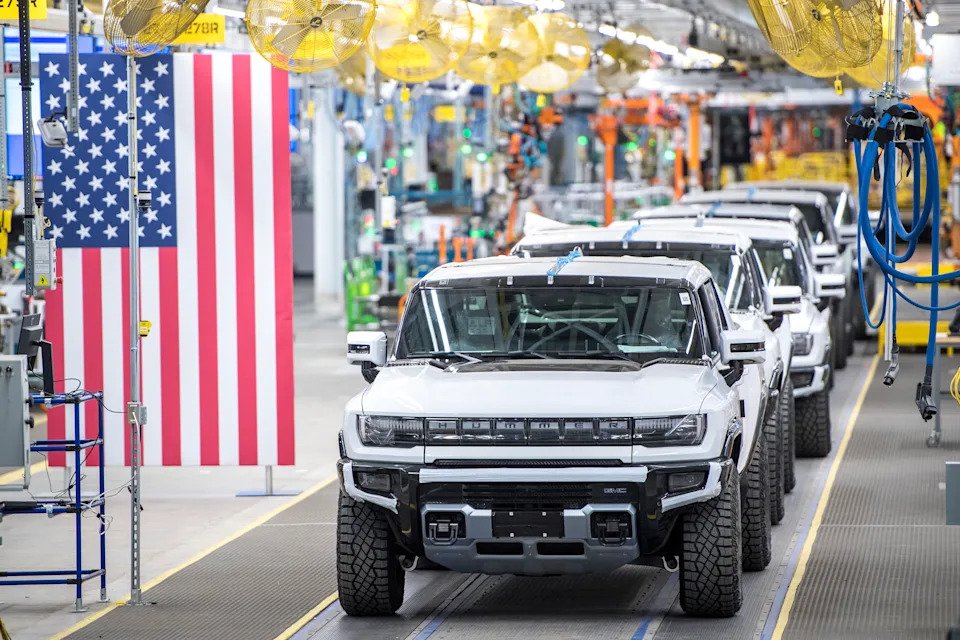
Trump's tariffs are pummeling top automakers. The hit is $11.7 billion — and climbing
Key Points
- Toyota, the world's largest automaker, reported a $3 billion loss in operating income for Q1 due to President Trump's tariffs, contributing to a cumulative $11.7 billion hit across major automakers.
- Tariffs impact not only imports from Japan (15%) but also broader auto sector tariffs (25%) affecting operations in Canada and Mexico, hitting companies like Ford, GM, and Stellantis under the USMCA.
- Even Tesla, producing vehicles in the US, faced a $300 million tariff cost on auto parts like EV batteries, with full impacts expected in future quarters.
- Automakers are considering raising prices or shifting production to the US, but building new factories or retooling existing ones involves significant time and investment (3-5 years, $0.5-2 billion).
- GM plans to invest $4 billion to move production of vehicles like the Chevrolet Blazer to the US by 2027, while Honda explores adding shifts to US facilities to mitigate tariff effects.
Summary
President Trump's tariffs have significantly impacted the auto sector, with Toyota, the world's largest automaker, reporting a $3 billion loss in Q1 operating income, contributing to a cumulative $11.7 billion hit across major automakers like Volkswagen, GM, Ford, and Honda. Tariffs, including 15% on Japanese imports and 25% on broader auto sector goods from Canada and Mexico, affect even US-based companies like Tesla, which faced a $300 million cost on EV parts. Automakers are grappling with responses, such as raising prices or shifting production to the US, though new factories or retooling require years and billions in investment. GM plans a $4 billion investment to relocate production by 2027, while Honda considers additional US shifts. However, experts warn that costs will likely be passed to consumers, with price hikes expected this fall and beyond, impacting all vehicle buyers regardless of origin. The long-term challenge remains balancing tariff costs against massive investments in US production.
yahoo
August 10, 2025
Stocks